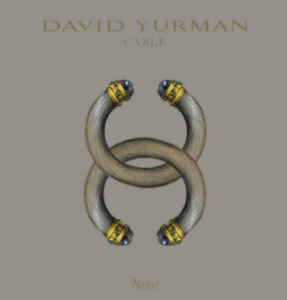 Jewelry designer David Yurman evokes a number of reactions from his peers, including admiration, contempt and jealousy.
Jewelry designer David Yurman evokes a number of reactions from his peers, including admiration, contempt and jealousy.
The last is certainly understandable if not especially admirable. Yurman is one of the very, very few “artist” jewelers who have managed to achieve commercial success. That success, of course, was built on his “cable” bracelet, which Yurman describes as “the river that runs through all of our collections.” Cable, in the sense used by Yurman, is twisted wire, usually sterling silver in a variety of diameters, whose terminals are simply or elaborately decorated with precious metal and/or gemstones. The bracelets (and later, the rings, watches, and various collections) are instantly recognizable as Yurman and for many women are status symbols.
The problem for many studio jewelers is that twisted wire paired with gemstones and/or contrasting metal is not an especially new concept. Artisans have been doing it for literally hundreds of years. Later, jewelers I knew who pointed out Yurman’s dependency on a familiar and ancient “design” concept were especially furious when he introduced the “Celtic knot” as an element in his jewelry and then had the effrontery to trade mark the designs.
Putting aside (for the moment) Yurman’s success, we are faced with the age old question of whether Yurman’s jewelry really is “art” and whether his design concepts justify both the acclaim and prices he commands for his work.
Rather than get into a convoluted discussion, let’s take the easy way out and ask whether his designs retain their freshness and vitality over time. (This is a legitimate question. Yurman’s cable bracelets first appeared in 1983, more than three decades ago, plenty of time for evaluation.)
Perhaps I’m a little jaded, but to my eye, the earliest bracelets seem a little tired, but truthfully that may be a result of having seen the same design in different iterations over multiple decades.
For professional pearl and bead stringers, though, there is another lesson to be drawn from Yurman’s career. Recently, the company announced the release of his book “David Yurman Cable.” (I’m not suggesting you buy it. At $90, I’ll wait until I can get it on the remaindered table and even then, I’ll probably pass.) The point is that whatever his achievements as an artist, Yurman is a master marketer and the book, trust me, is primarily a marketing tool to position Yurman as an artist and buttress his legacy. He was born in 1942.
This is the point that many artist/studio jewelers miss. If you don’t put your work out there, no one sees it. If you rely exclusively upon others to market your work, you’re don’t get to talk about your work – others do it, assuming anyone actually sees it.
Some of the best and most well-known designers are also exceptionally good marketers. In my experience, the best and most professional studio jewelers understood the value of marketing and made it an integral part of their day-to-day activities.
Whatever you think of Yurman’s work, he got this part of it right.

